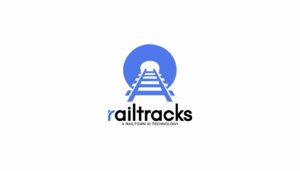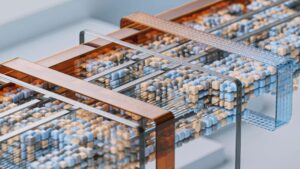On Jan 27th, the AI sector had a seismic wake-up call as the perceptions about the cost of building foundational large language models was flipped on its head…..from a Railtown perspective this is a very good thing as it further confirms what we have been building here at Railtown with our Targeted Language Model called “Conductor” a low cost vertical specific model that can be deployed on the cloud or on premise. We believe the arrival of DeepSeek is the beginning of the low-cost language model per customer era and the next obvious step for keeping your Data, IP and Copyright protected. For example, do you really want your proprietary data exposed to LLM’s controlled by OpenAI, Musk or Zuckerberg? I don’t think that one is hard to answer. This is an LLM decentralising moment, a few Raspberries and AMD GPU’s and you are off to the races…. very exciting for everyone, maybe not so much for the AI giants.
Here’s a comparison of a previous seismic shift in technology…
Mainframe Computers to Personalized Computers
Mainframe Computers
Mainframes are large, powerful computers designed for processing and managing vast amounts of data simultaneously. Large organizations like banks, insurance companies, and governments often use them.
Advantages:
- High processing power: Can handle millions of transactions per second.
- Scalability: Easily upgraded to support increased workloads.
- Reliability: Rarely fail and are designed with redundancy to ensure uninterrupted operation.
- Centralized management: Allows multiple users to access and process data centrally.
- Massive storage: Supports huge databases and file systems.
Disadvantages:
- Cost: Very expensive to purchase, maintain, and operate.
- Specialized skills: Requires highly trained staff to manage.
- Size and space: Physically large and needs special facilities like cooling systems.
- Complexity: Can be difficult to integrate with modern cloud-based systems.
Personal Computers (PC’s)
PCs are smaller, less powerful computers designed for individual use. They are widely used in homes and offices for tasks like word processing, browsing, and gaming.
Advantages:
- Affordability: Much cheaper than mainframes, making them accessible to individuals and small businesses.
- Portability: Laptops and tablets offer mobility.
- User-friendly: Easy to set up and use with widely available software.
- Flexibility: Can be customized for different tasks like gaming, design, or programming.
- Compatibility: Works well with modern applications and cloud services.
Disadvantages:
- Limited processing power: Cannot handle massive workloads like mainframes.
- Prone to failure: Not as reliable for continuous operation.
- Lower scalability: Upgrading performance is limited compared to mainframes.
- Security: More vulnerable to cyber threats if not properly secured.
Key Differences
| Feature | Mainframe | PC |
| Purpose | High-volume, large-scale processing | Individual and small-scale use |
| Size | Large | Compact |
| Cost | Extremely expensive | Affordable |
| Users | Supports thousands of users at once | Usually supports one user |
| Processing Power | Very high | Moderate to high |
| Applications | Banking, government, enterprise tasks | Personal, office, gaming, design |
If you just remove “Mainframe Computers” and replace it with “Large Language Models” and remove “PC’s” and replace it with “DeepSeek type Models” it will become much easier to visualize.
Of course this is not an exact comparison, the PC market had many growing pains, but you can see the big picture.
….and I think we all know what the impact that the PC has had on business, the global economy, and wealth.



